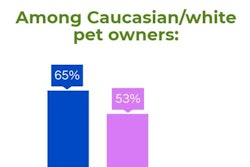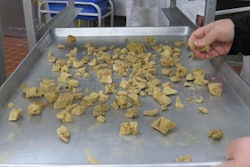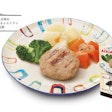
Dog treats labels' feeding guidelines may exceed the recommended amount of calories dogs receive from treats each day. Scientists led by Giada Morelli, DVM, at the University of Padua, Italy examined the labeling of 32 varieties of dog treats on the international market and published their results in the journal Vet Record.
“Pet treat producers should reconsider the feeding instructions provided on labels as we demonstrated that usually they exceed the 10 percent maintenance energy requirements (MER) suggested by the literature,” Morelli told Petfood Industry. “For the MER calculation of an average dog we considered a formula which took into account sterilization and sedentary life, which are the major factors contributing to pet obesity that is a growing problem for pets.”
Dog treat experiment design
Morelli’s team used various types of dog treat: four biscuits, nine tender treats, two meat-based strips, five rawhides, eight chewable sticks and four dental care sticks. They analyzed the dog treats for proximate nutrient composition and quantification of minerals, hydroxyproline, starch, glucose, fructose and sucrose.
“We tried to collect products available in many countries, belonging to brands such as Purina, Pedigree, Friskies, Royal Canin, Trixie, Vitakraft, Bayer which were the most represented,” she said. “The study was conducted in Italy but we tried to collect treats of international pet food brands in order to analyze products available also in other countries with the same formulation. In fact, the packages were always multilingual.”
Dog treat analysis results
If dog owners follow manufacturers' feeding instructions on number of treats per day, Morelli’s team found that, on average, dog biscuits would account for 16 percent of MER for dogs of any size. Rawhides would exceed 25 percent of MER for small-sized dogs and 18 percent for medium-sized dogs. Chewable sticks would make up more than 10 percent of MER for all size dogs, reaching 16.9 percent MER for small-sized dogs. Only dental sticks remained below 10 percent MER for all dog sizes.
“The most calorically dense products were Gimborn multivitamin drops (475 kcal/100g) and Vitakraft beef sausages (418 kcal/100g) which are commonly available in the European market,” Morelli said.
Another issue her team noted was that many of the dog treat labels’ ingredient decks listed only generic categories, such as sugar, as opposed to sucrose, fructose or other specific types of sugar. Since various sugars may be digested differently, the generic names could make the ingredient decks more difficult to decipher.
For example, in Petfood Industry’s Dog and Cat Food Ingredient Center, 146 dog treats, 15 percent of the total, listed sugar or brown sugar on their ingredient decks.
Also, the mineral contents varied among treats, which could make feeding treats to dogs on mineral-restricted diets difficult. Similarly, the scientists found that rawhide treats had high levels of hydroxyproline, an amino acid, which could make rawhide dog treats problematic for canines predisposed to calcium-oxalate urolith, or bladder stone, formation.

















